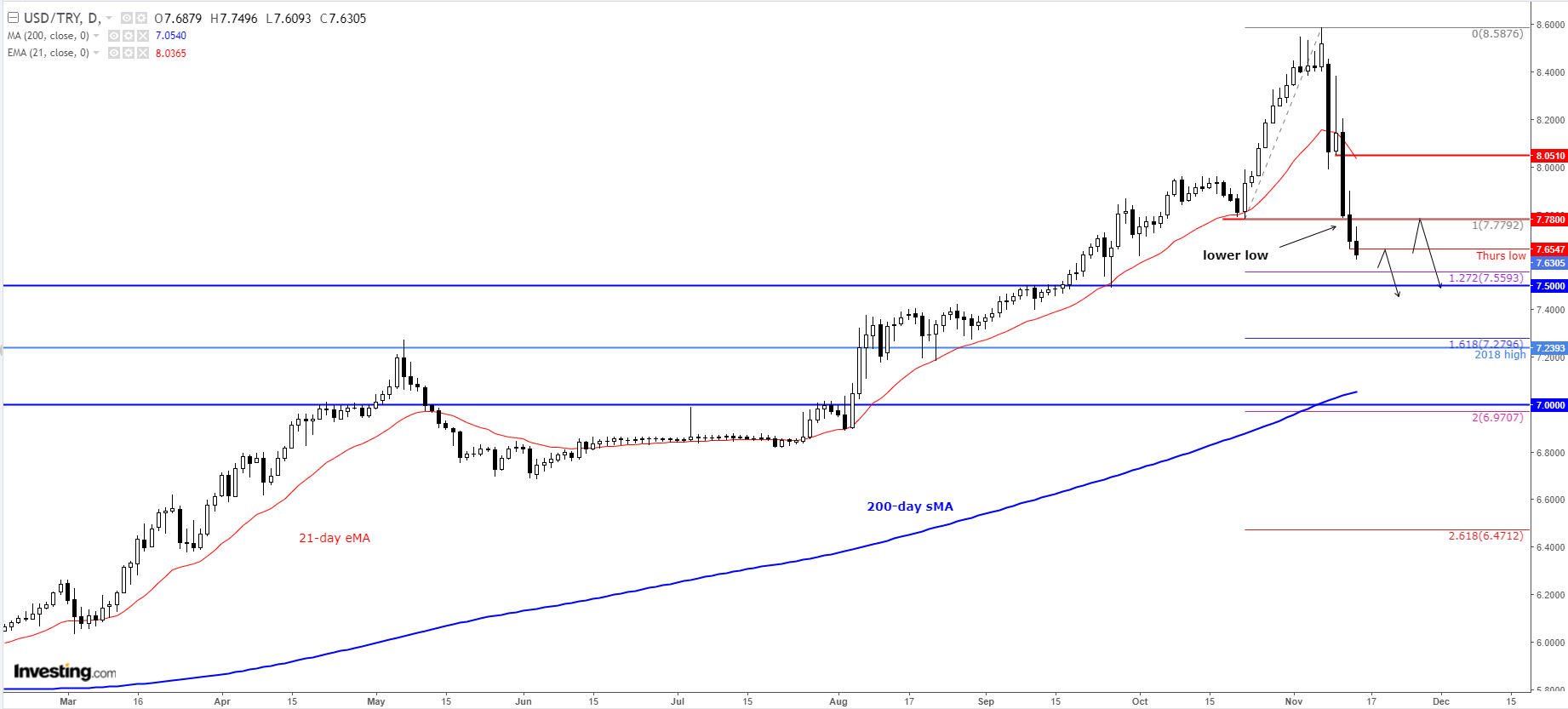This article was written exclusively for Investing.com
This week’s star performer in FX, the Turkish lira, continued to push higher on Friday, as it extended its gains to more than 10% against the US dollar. As rates continue to breakdown key support levels, more gains could be on the way on momentum buying ahead of the Central Bank of the Republic of Turkey’s (CBRT) rate decision on Thursday of next week.
An abrupt shift in rhetorical gears from Turkish President Recep Tayyip Erdogan caused the lira to make one of the sharpest U-turns it has ever seen. On Wednesday, he pledged a new economic growth strategy to get the nation out of its woes, by bringing stability, lowering inflation and attracting international investment—even if it meant swallowing “bitter-pill policies,” if needed.
Erdogan—who most economists and no doubt investors blame for Turkey’s economic woes—had long been an advocate of low interest rates. Contrary to conventional wisdom, he insisted that higher interest rates are inflationary. But after learning a harsh economic lesson—with the lira plunging to record lows, which exacerbated the inflationary pressures as import prices kept on rising—he finally succumbed to pressure.
Erdogan decided to replace his son-in-law Berat Albayrak by Lutfi Elvan as the new Finance Minister and got rid of the former central bank governor and replaced him by Naci Agbal, after monetary policy was kept unchanged at the CBRT’s latest meeting, instead of a hike to dampen surging inflation. Erdogan has said that he will stand by the actions of the new finance minister and central bank governor “in every step they take.”
All eyes will now be on the new CBRT head who will hold his first Monetary Policy Committee meeting on Thursday of next week. Interest rates will almost certainly rise sharply at this meeting, given that a tighter policy stance will—or should—no longer be opposed by the President.
In addition to speculation over tighter monetary policy in Turkey, news of the Pfizer (NYSE:PFE) vaccine has also helped to lift the mood towards all risk assets, including the Turkish lira and other emerging market currencies.
Thanks to the above developments, the USD/TRY has created its first major lower low after taking out support at 7.7800. This is a clear bearish development, as previously all short-term selloffs had been bought. But now there is a breakdown in the market structure of higher highs and higher lows.

With rates holding below 7.7800, any rebounds back to this former support or other short-term resistance levels, including Thursday’s low at 7.6550ish, could fade.
On the downside, a few potential targets are shown on the chart.
- Among them, the psychologically-important 7.5000 handle is probably the most important short-term target to watch for potential short-side profit-taking. This level was also previously support and resistance and comes in just below the 127.2% Fibonacci extension.
- A slightly longer-term level to watch for a potential reaction around is at just below 7.2400—which was the previous significant high made back in 2018. As it happens, this level comes in not too far from the 161.8% Fibonacci extension level.
- Finally, a long-term bearish objective could be the 7.0000 handle.
With prices being potentially oversold in the short-term, don’t be surprised if we see a good reaction around any of the above bearish targets. However, that’s not to say one should look for bullish setups there. Given the fundamental shift in how Turkey’s finances and monetary policy will be handled, and the corresponding breakdown of prices, I would favour looking for bearish setups rather than bullish for the foreseeable future, or until the charts tell us otherwise.
